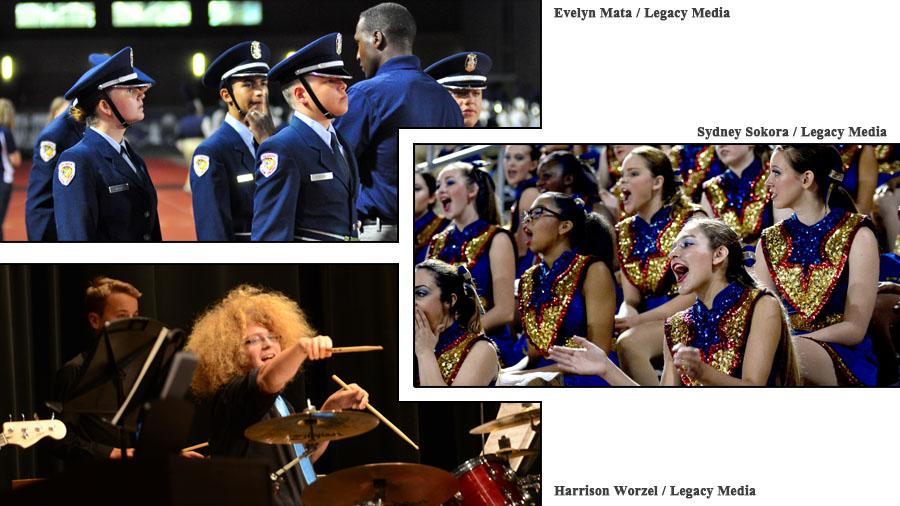The scoop on extracurricular activities
By staying involved in extracurricular activities, students can gain many different experiences.
Band, orchestra, sports, choir, theater, ROTC and DECA. Extracurricular activities have proven to be beneficial to young people not just with having something to do, but in improving grades, behavior and overall performance, according to orchestra director Carlos Lara.
“I think extracurricular activities are essential to the lives of young people,” Lara said. “I’ve seen students come in unfocused and needing a challenge, and grow into young adults full of confidence and passion and direction.”
The benefits of extracurricular activities, according to freshman assistant football coach Andrew Grimm, include structure, grade improvement, and accountability.
“Sports provide structure not all students get at home,” Grimm said. “Extracurricular activities help students belong to something. They become part of something bigger than themselves.”
Unfortunately, when budget cuts are made, activities such as the arts can be the first to go. Lara believes that without these activities, students will not be as successful.
“We have extracurricular activities, but what if we didn’t?” Lara said. “When students are oriented with a common objective, individual growth becomes exponential.”
Changes seen in students due to extracurricular activities are not only noticed by teachers, but peers as well. Higher grades can raise a student’s confidence, according to junior Michelle Scott.
“I’ve seen students gain confidence in themselves [from being in theater],” Scott said. “There are lots of standards we are held to, and we have to keep our grades up to perform.”
Extracurricular activities can be tiring, but Lara believes the benefits are infinite. According to a study by NCES Education Policy, 50.4 percent of participants in extracurricular activities had no unexcused absences, versus 36.2 percent of non-participants. Around 30 percent of participants had a grade point average of 3.0 or above, versus 10.8 percent of non-participants, and 29.8 percent of participants scored in the highest 25% on a math and reading assessment, compared to 14.2 percent of non-participants.
“You could try to write a list but there isn’t enough paper,” Lara said. “The senses and the mind are stimulated and social interaction is needed in a group-oriented program. They build camaraderie and give leaders a chance to shine.”



